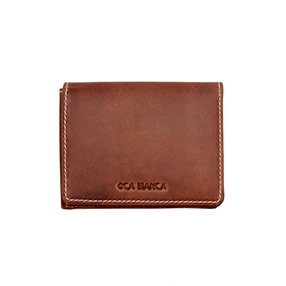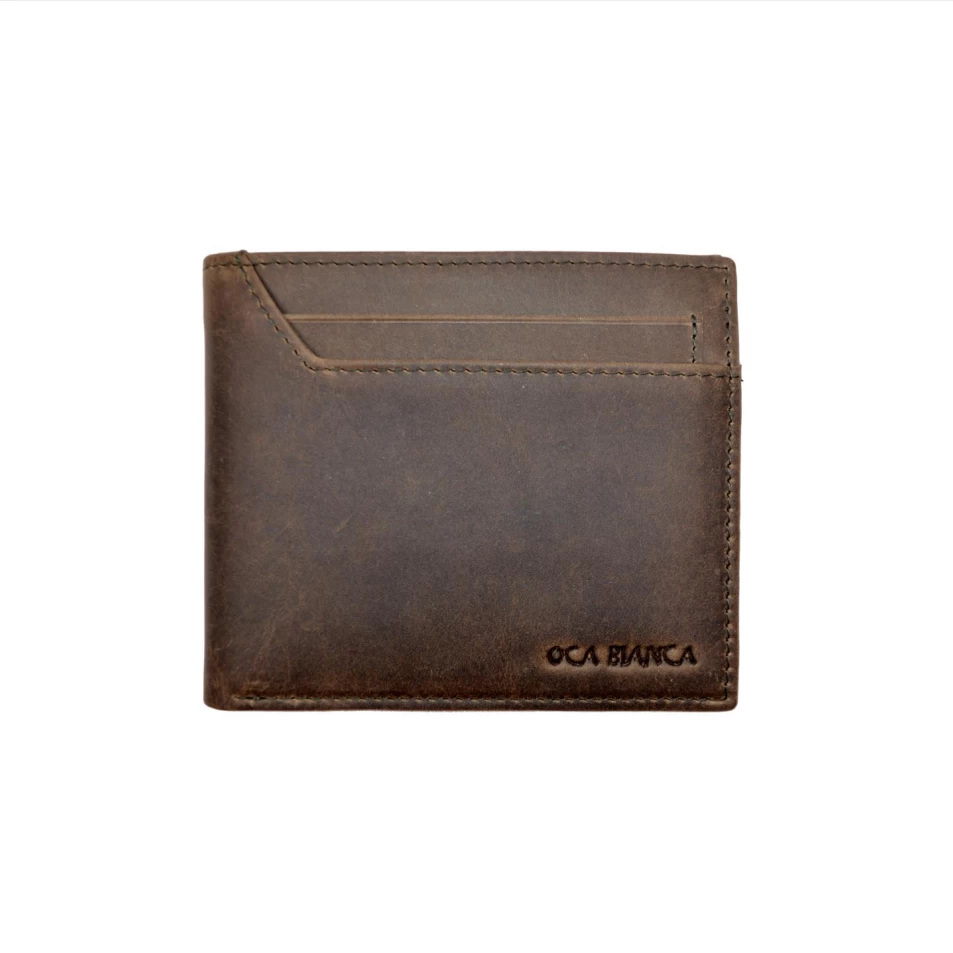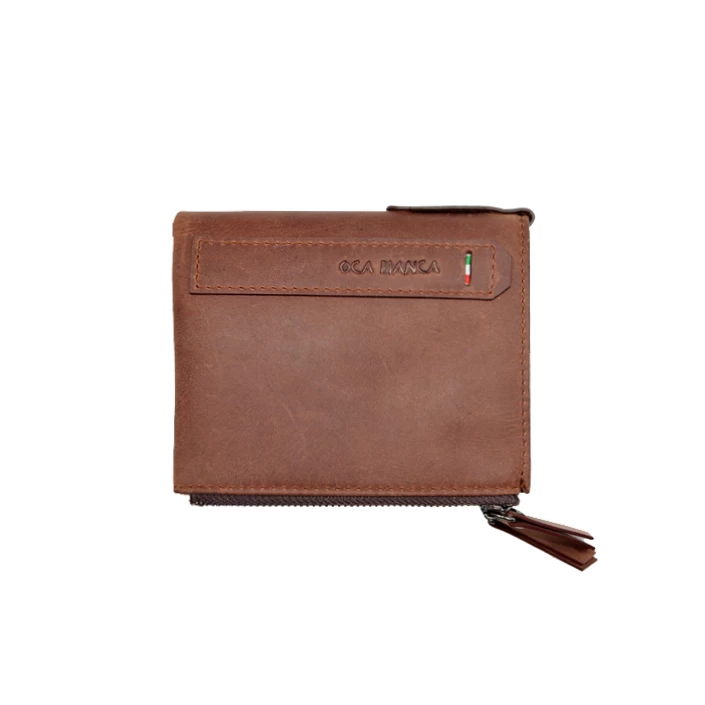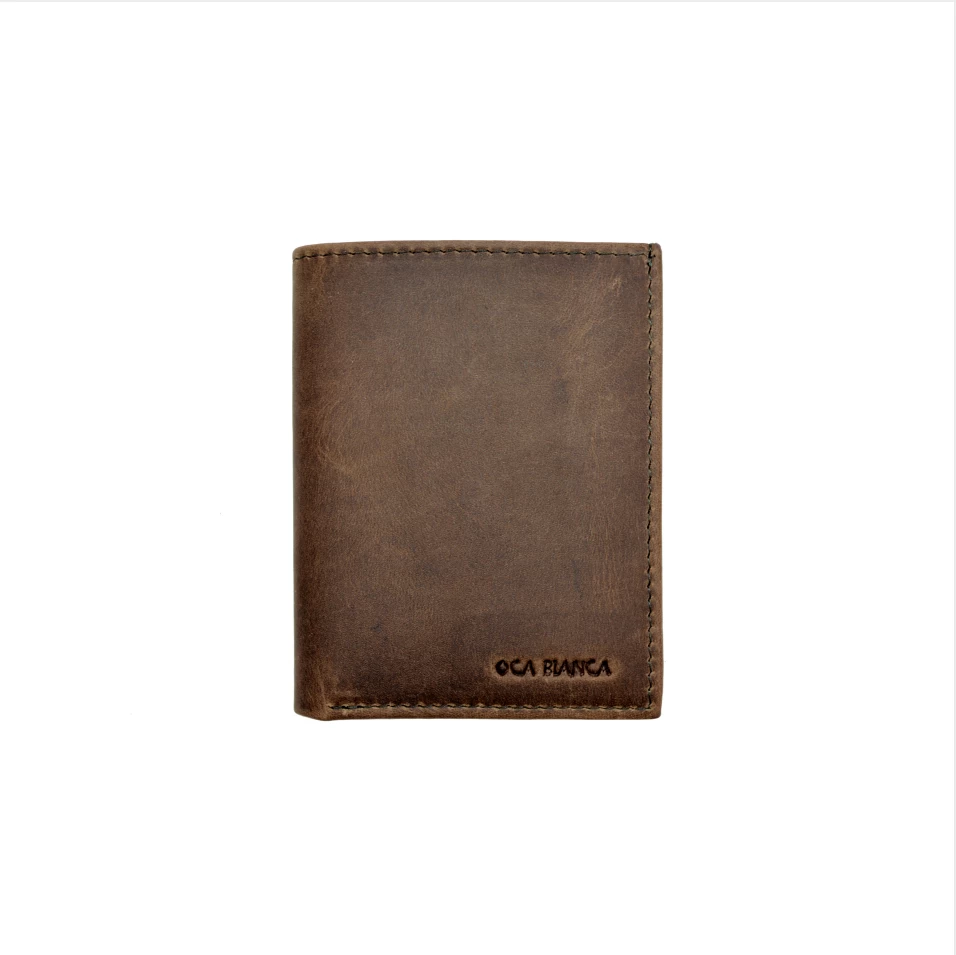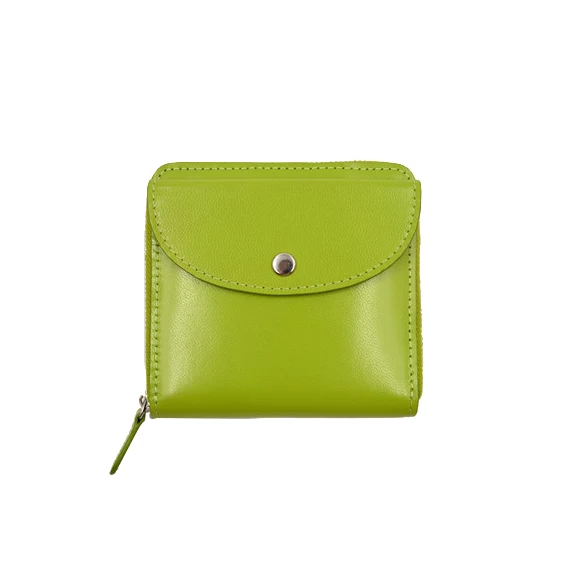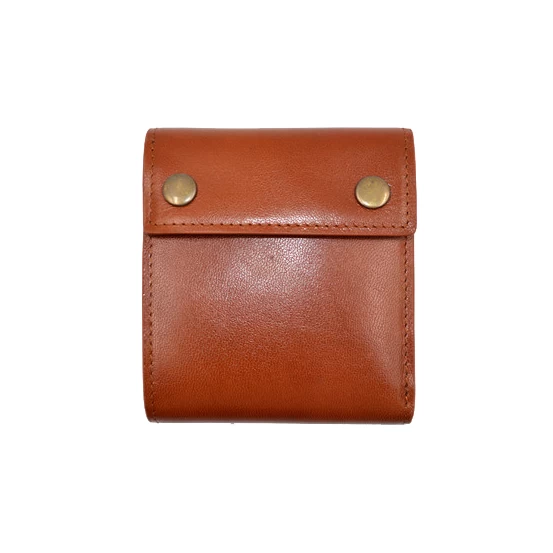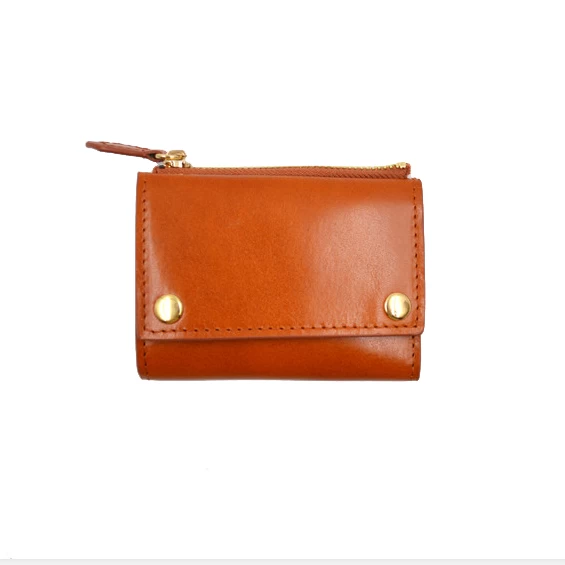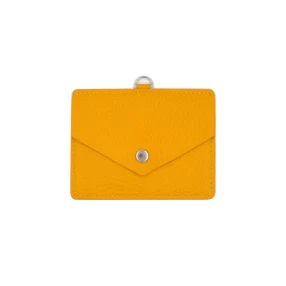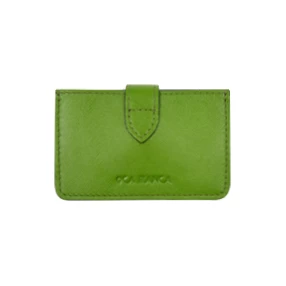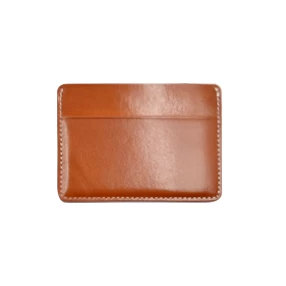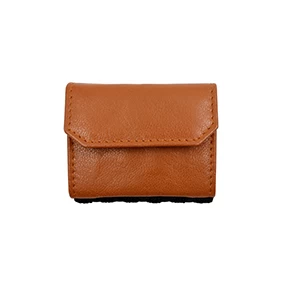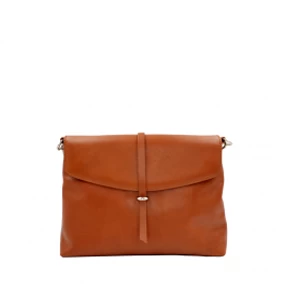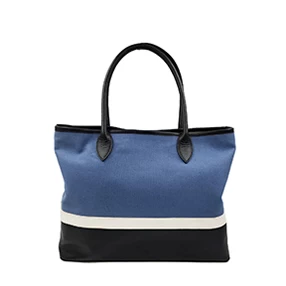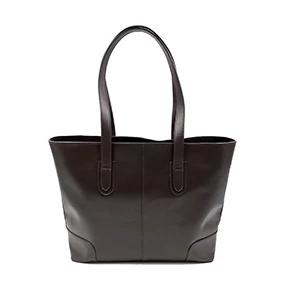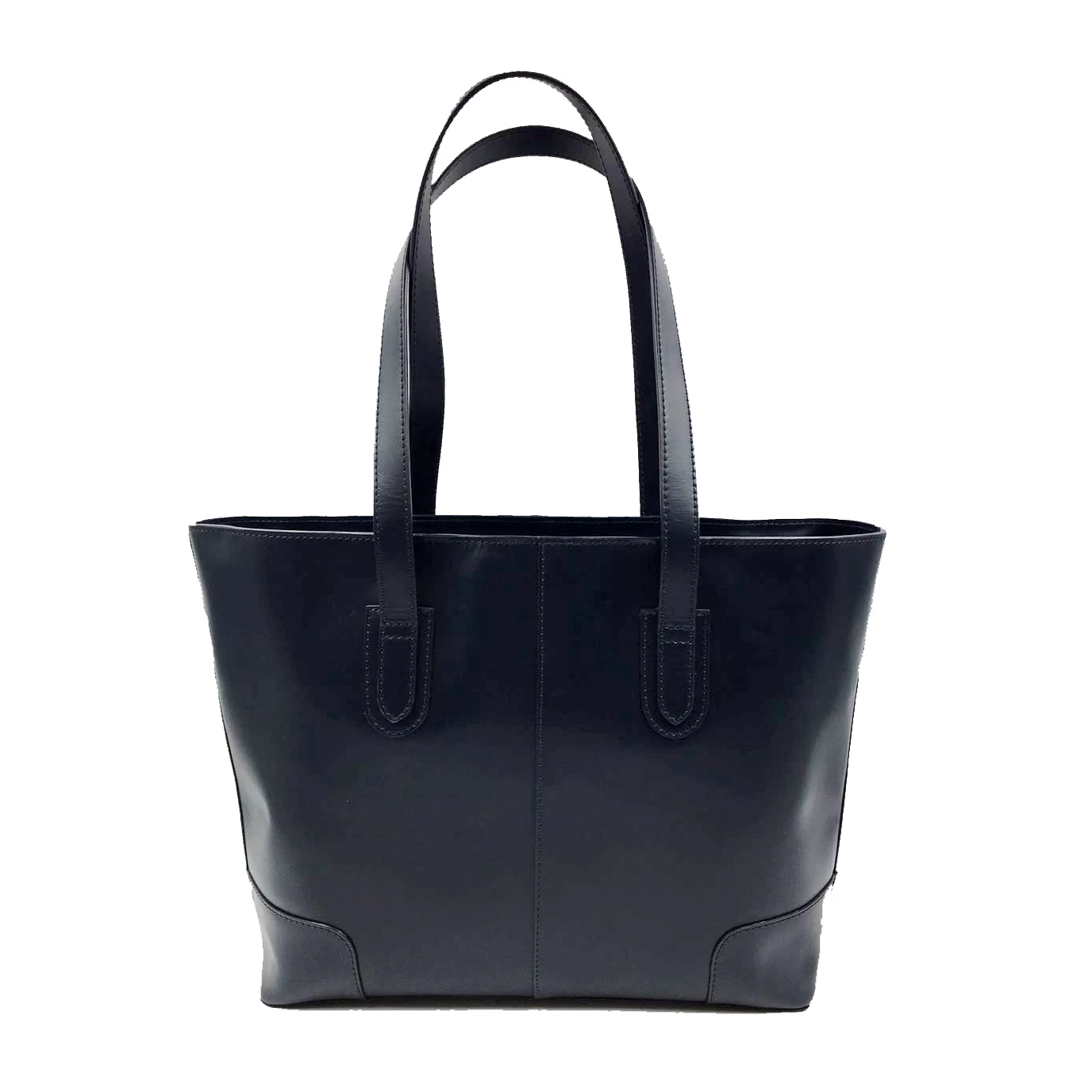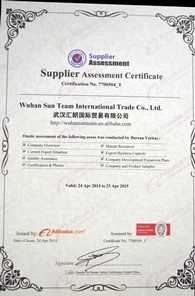How to Make a Leather Wallet(2)
Lily
www.walletwmazon.com
2017-07-05 10:59:17
Lay your template down on the leather and mark up the leather. I try to minimally mark the leather only where I know that I will need reference points. This keeps the wax pencil from getting everywhere.
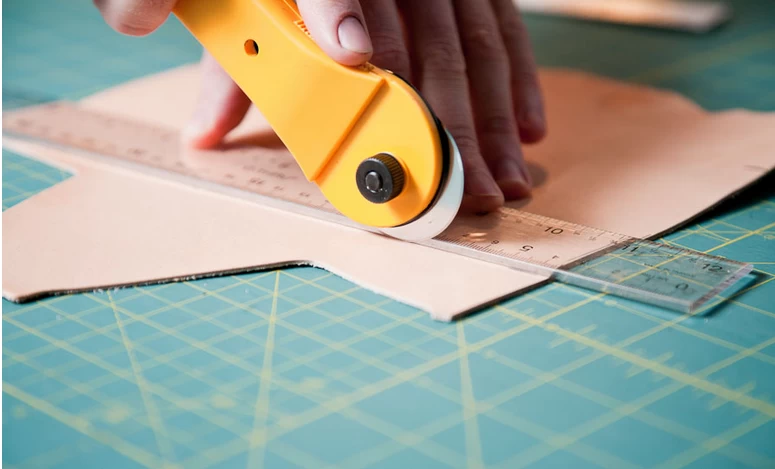
I cut out the leather with my rolling cutter and steel ruler.
Lay the leather flesh side up (that’s the rough side) and mark the fold lines.
Then wet the entire length of the fold with a little bit of water. Not much water is needed – this just ‘cases’ the leather and allows it to be formed and hold its shape when you bend it.
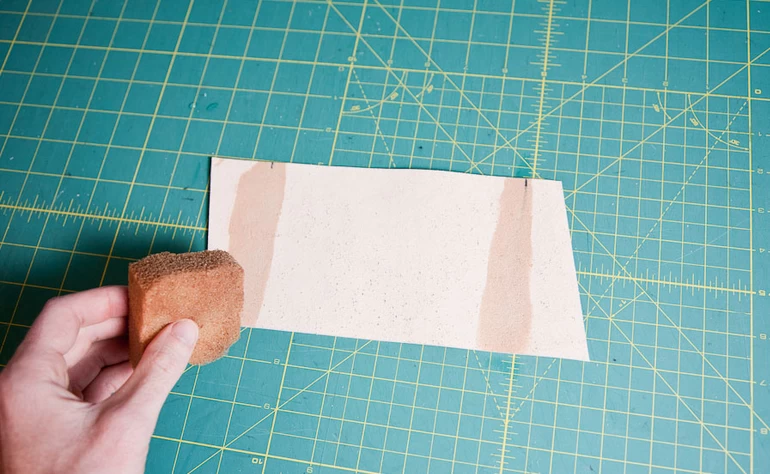
Go ahead and bend both sides straight across. I also use a lightweight mallet to help pound down the fold.
Next we need to prep the grain side of the leather (smooth side) for edge marking. Wet the grain side very lightly, covering the entire piece. If you only wet certain sections – that area of leather will actually be slightly darker once everything dries.
Run the edge marking tool down both short ends of the leather, starting and stopping about 1/4 inch from the edge. I like adding this accent to give the piece a tiny bit of extra detail.
In order to give ourselves a good straight reference line for stitching…as well as help sink the stitching into the leather thus protecting it – we need to use a stitching groove cutter. Set yours so the middle of the hole to the inside edge of the cylinder is about 4mm.
In the photo above you can see that I started and stopped the groove just after the fold we made previously. Whatever is above the fold will be on the inside of the wallet…and with the groove – it is sometimes hard to get it to line up with the stitches on the inside, so I end it short.
The edge beveler is a great tool – and for quite a while I was using the wrong one! I recently purchased the smallest size I could find from Weaver Leather Supply, a size 0. This is a perfect size for thin leathers such as our 3-4 oz.
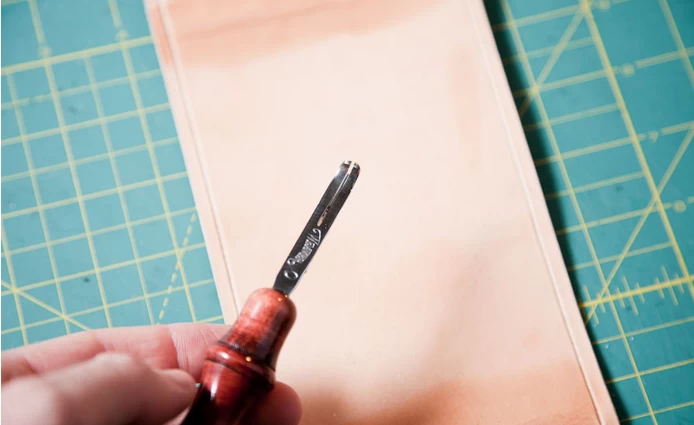

I cut out the leather with my rolling cutter and steel ruler.
Lay the leather flesh side up (that’s the rough side) and mark the fold lines.
Then wet the entire length of the fold with a little bit of water. Not much water is needed – this just ‘cases’ the leather and allows it to be formed and hold its shape when you bend it.

Go ahead and bend both sides straight across. I also use a lightweight mallet to help pound down the fold.
Next we need to prep the grain side of the leather (smooth side) for edge marking. Wet the grain side very lightly, covering the entire piece. If you only wet certain sections – that area of leather will actually be slightly darker once everything dries.
Run the edge marking tool down both short ends of the leather, starting and stopping about 1/4 inch from the edge. I like adding this accent to give the piece a tiny bit of extra detail.
In order to give ourselves a good straight reference line for stitching…as well as help sink the stitching into the leather thus protecting it – we need to use a stitching groove cutter. Set yours so the middle of the hole to the inside edge of the cylinder is about 4mm.
In the photo above you can see that I started and stopped the groove just after the fold we made previously. Whatever is above the fold will be on the inside of the wallet…and with the groove – it is sometimes hard to get it to line up with the stitches on the inside, so I end it short.
The edge beveler is a great tool – and for quite a while I was using the wrong one! I recently purchased the smallest size I could find from Weaver Leather Supply, a size 0. This is a perfect size for thin leathers such as our 3-4 oz.

Tel:86 2785570058
Email:sunteam03@wuhansunteam.com
Website:www.leathergoods-manufacturers.com
Email:sunteam03@wuhansunteam.com
Website:www.leathergoods-manufacturers.com







